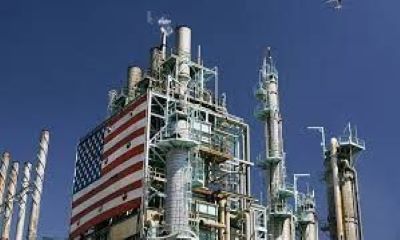For chemical companies, the past two years’ events may be a warning that better systems are needed for navigating disruption says Deloitte’s 2022 Chemical Industry Outlook

The US chemical industry has witnessed a strong recovery since the beginning of 2021 and 2022 could mark the full recovery for the industry pre-pandemic according to ‘2022 Chemical Industry Outlook’ by the leading consulting firm Deloitte.
The report cites past two years’ events as a warning for the chemical companies to adopt better systems for navigating disruption. It predicts visibility which is likely to become the most critical capability for the chemical industry in the coming year.
Increasing visibility, including costs and prices, depends on how a company is experiencing disruption, and digital technologies could be essential enablers. As supply shortages could derail production flow, chemical producers in this scenario could consider multi-sourcing strategies. Moreover, companies experiencing shifts in demand may want to increase visibility into operations to help them focus on cost-cutting opportunities. They can use the visibility gained to create flexibility across their production environment to quickly take down costs to weather suppressed demand and more quickly respond to an eventual uptick in demand.
From sustainability to consumer-centricity, the annual outlook report by Deloitte explores five trends that will be top of mind for chemical companies in the year ahead.
Trend 1: End-market Growth
The US chemical industry is poised for a strong recovery in 2022 as economies reopen and restrictions are lifted, which should drive up plant utilization rates that were hit hard by the pandemic. US chemical volumes are expected to grow around 1.5% in 2021 and 3% in 2022, while shipments will likely increase by 8% in 2021 and 2022, following a 13.5% decline in 2020.
US chemical exports are also expected to grow significantly as major economies reopen and import demand in partner economies improves. But one of the risks for this strong recovery is inflation. For example, Brent crude oil spot prices rebounded strongly and remained at an average of US $74 per barrel in September 2021. Those inflation figures provide further evidence that the supply of raw materials and labor is struggling to keep up with resurgent demand. Central banks in the United States and Europe expect supply bottlenecks and inflation to ease in 2022 once the global recovery finds firmer footing and government support programs are unwound.
Trend 2: Transforming Asset Portfolios
Chemical companies are entering 2022 after overcoming challenging market conditions in 2020 and 2021, with COVID-19 adding volatility to an already volatile decade. The pandemic led to divergent demand for plastics and specialty materials, testing the resilience of companies’ asset portfolios. The shifts in chemical spending partially reflect commodity price volatility, but are more driven by longer-term trends, including petrochemical expansion in the US Gulf Coast. 2022 will likely see similar price and demand volatility, and the chemical sector will need to adapt, particularly as the energy transition accelerates. Chemical companies are likely to focus on repositioning their asset portfolios and balancing trade-offs between different strategic options with critical considerations, such as scale, the scope of products, and growth opportunities.
Trend 3: Climate Change Driving Sustainability
In 2022, the chemical industry will likely be pushed to decarbonize by regulatory and scientific pressures as the impacts of climate change grow more apparent. Moreover, the industry may come under further scrutiny as the public becomes increasingly sensitive to plastic waste and the improper disposal of end products. While carbon emissions are hard to abate in the chemical industry due to reliance on process heat, advances in decarbonizing chemical production could have a profound impact globally. The benefits of decarbonizing chemical companies could spread beyond the industry itself, since chemistry provides the building blocks for many value chains.
Trend 4: Accelerating Business Transformation
There remains immense, but relatively unexplored, potential for advanced data analytics and digital technologies to transform the chemical industry. Today, digital tools and technologies present an economically feasible solution for extracting more efficiencies from incumbent processes and designing novel products and processes.
Due to the convergence of accelerating improvements, such as advances in sensors, cognitive computing, and analytics, significant progress can be expected in three areas in 2022: data availability, data processing, engineering and materials research. In the past, chemical businesses have typically implemented advanced data analytics and digital initiatives in silos, resulting in slower processes, higher costs, and uncertain benefits. However, chemical firms are now increasingly realizing that digital transformation is about implementing more and better technologies and involves aligning culture, people, structure, and tasks.
Trend 5: Embedding customer-centricity to create differentiation in the market
Customer expectations and behaviors have changed dramatically over the past decade, and more so in the wake of COVID-19. Chemical businesses today are expected to meet customers’ needs and expectations at every interaction in return for customer loyalty. The ability to deliver this could depend on the extent to which customer-centricity is embedded within every link in the value chain in the chemical business. Especially in light of the convergence of many industries that are rebranding and repositioning themselves, customer-centricity should play an instrumental role in staying a step ahead of the competition.
Chemical companies are likely to leverage digital technologies to enable automated trend sensing and social media scanning to identify broader market trends and customer requirements. This customer-centric innovation, which solicits real-time feedback through customer engagement tools, could help improve the scope, scale, and returns of R&D efforts.
Subscribe to our newsletter & stay updated.